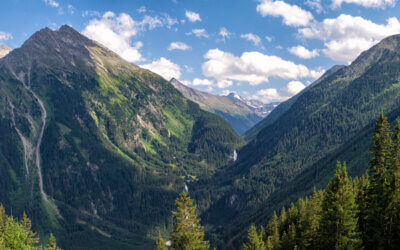Don’t let their appearance fool you. Polar bears may look cute and cuddly, but they are in fact fierce creatures at the top of the Arctic food chain. Did you know that our furry northern friends are facing habitat loss and reduced access to food, all because of climate change?
The Arctic is warming twice as fast as the global average. Even small changes in temperature can have a huge impact, including decreased fish and seal populations, melting glaciers, ice, and tundra, and rising sea levels.
Arctic Meltdown: Why is the Arctic Warming so Quickly?
Increased greenhouse gases – CO2 is trapping heat from the Sun in the Earth’s atmosphere.
Decreased albedo effect – Ice and snow reflect 85 percent of solar radiation back into space. With reduced Arctic ice cover, more energy is absorbed into Arctic land and water, further accelerating the melting cycle.
Summer sea ice cover has decreased 40 percent since the 1970s. When winter arrives in the Arctic, ice that melted over the summer re-forms. Increased temperatures are preventing Arctic ice from reforming to its original state. Global warming has interrupted the cycle.
No Ice, No Dinner
Polar bears need ice for survival. Their diet consists almost exclusively of seals, and ice acts as a platform to hunt and trap them. Ice enables polar bears to roam and stalk their prey.
Decreased ice cover, especially during the summertime, means increased distance between platforms. Polar bears are forced to travel further to find food. Although excellent swimmers, they can only cover a maximum of 100 kilometers at a time. A longer summer of ice-melt, means a shortened seal-hunting season. As a result, polar bears are having difficulty meeting their dietary needs – up to 100lbs of food in one sitting!
Unlike many bear species, polar bears do not hibernate. They hunt for food year-round. With huge appetites to satisfy and few food options other than seals, malnutrition is contributing to reduced reproductive rates among the polar bear population. Polar bears have few adaptive options and are declining in numbers. They are now classified as a “vulnerable” species by the IUCN.
You can follow the polar bears with the WWF Species Tracker!
How Can You Help the Polar Bears?
Climate change is the single largest threat to polar bears so thankfully you can do something about it! Ride public transit, eat locally, recycle, and use energy efficient appliances – anything to minimize your environmental impact. Every little bit helps!
What are you doing this Polar Bear Day? Share your thoughts and actions on our Facebook page. Plus, follow us on Twitter and Pinterest for more sustainability tips. Looking for more sustainability news? Sign up for our newsletter and we will keep you in the loop.
Brought to you by terrapass.com
Sources:
https://ngm.nationalgeographic.com/2016/01/arctic-ice-shrinking-graphic-environment-text
https://www.wwf.org.uk/wildlife/polar_bear/top_10_polar_bear_facts.cfm
https://wwf.panda.org/what_we_do/where_we_work/arctic/what_we_do/climate/.










